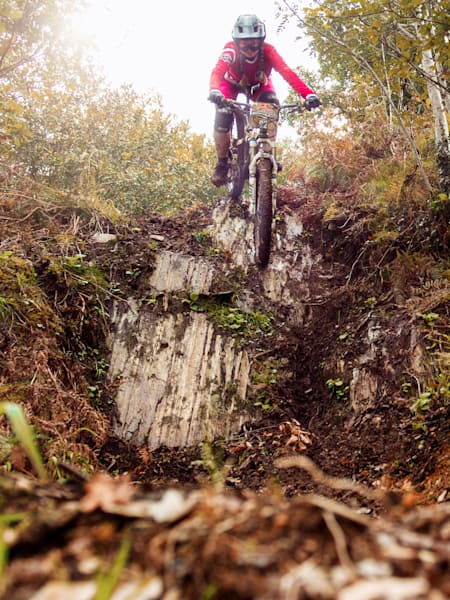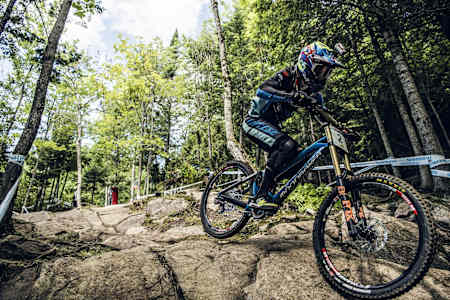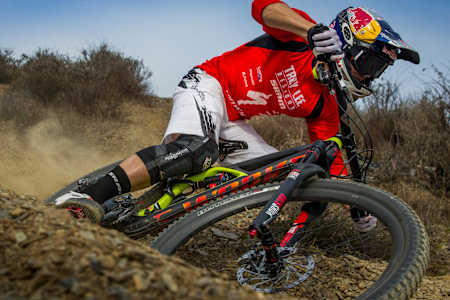Bike
There’s plenty to learn when you first start mountain biking, and just like any sport, it’s easy to pick up bad habits. But fear not, as we’ve compiled a list of five classic beginner mistakes and how to remedy them.
1. Toes on the end of the pedals
Whether on flats or clipped in, the position of your feet on the pedals can have a big impact on your riding ability.
It may seem natural to balance on your toes, or with the ball of you foot directly over the pedal axle, but this can put unnecessary forces on your leg muscles.
Try moving your forefoot forward and positioning the ball of your foot just in front of (but not drastically so) the pedal axle. This will help recruit the right muscles for a stronger and more stable position, especially when it comes to gravity riding.
2. Pedalling through technical sections

3 min
How to Jump
Learn the basics of mountain biking with Tom Oehler and Rob Warner
When you're first starting out and speeds are slow, you may need to pedal through technical sections like rocky gardens or narrow rooty trails. This obviously increases the chance of a pedal strike, and whilst sometimes it can’t be avoided, you can mitigate the risk by choosing the right gear.
A lighter gear with a higher cadence may seem natural, but try changing down into a slightly harder gear than you’re used to before hitting the technical section. This does put some more strain on your muscles, but it will also lower your cadence and lessen the risk of a pedal strike.
3. Not looking far enough down the trail
Anticipation is the name of the game in mountain biking, however it’s easy for beginners to get into the habit of staring down at the trail just ahead of the front wheel.
This can lead to problems (otherwise known as crashing), as you’re not able to anticipate the next obstacle on the trail quickly enough – basically everything becomes a surprise.
So next time you’re on a familiar piece of trail, think of a mantra that reminds you to look further ahead, meaning you’ll be able to anticipate the next feature earlier and adjust your line choice/speed accordingly.
4. Sitting down too much
Sitting down on that lovely comfy saddle may seem like a safe bet if the terrain gets tricky, but you will be missing out on the best shock absorbers on the planet, your legs.
Not only will your legs help you soak up all those lumps and bumps, they’ll also allow you to separate your body from your bike. This makes it easier to lean and shift your weight around, making you a faster, more confident mountain biker.
Check out any pro downhill or enduro race run and you’ll see a common theme throughout: the riders hardly ever sit down, so it’s a skill well worth paying attention to.
5. Death grip – being too tense on the bike
Many riders suffer from sore hands, arms and shoulders when they first start riding and this is often down to something we like to call ‘death grip’ – basically holding on too tight.
It might feel more secure to grip those bars with a vice-like hold, but all it will do is tense you up and make it harder to move dynamically on the bike.
We like to think of the mantra ‘loosey goosey’. Obviously you don’t want to hold on so lightly that your hands fall off the bars, but loosening/relaxing your grip a little should help reduce upper body soreness and increase your overall control on technical features.









